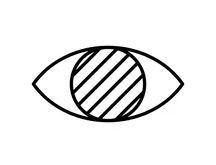
Pediatric glaucoma surgery is a specialized field that involves surgical interventions to treat glaucoma in children. Glaucoma is a group of eye conditions characterized by increased intraocular pressure (IOP), which can lead to optic nerve damage and vision loss. In pediatric cases, glaucoma can be congenital or acquired. Here are key points about pediatric glaucoma surgery:
Types of Pediatric Glaucoma Surgery:
- Trabeculotomy: A procedure to open the drainage system (trabecular meshwork) to enhance the outflow of aqueous humor.
- Trabeculectomy: Creating a new drainage channel to lower intraocular pressure.
- Glaucoma drainage devices: Implanting small tubes (shunts) to redirect the flow of aqueous humor.
Indications for Surgery:
- Pediatric glaucoma surgery is considered when medical and conservative treatments, such as eye drops or oral medications, are insufficient in controlling intraocular pressure.
- Surgical intervention is often necessary to prevent further optic nerve damage and preserve vision.
Congenital Glaucoma:
- Pediatric glaucoma can be present at birth (congenital glaucoma) or develop in infancy or childhood.
- Congenital glaucoma often requires early intervention to prevent irreversible damage to the developing visual system.
Anesthesia and Considerations:
- Pediatric glaucoma surgery is typically performed under general anesthesia to ensure the child remains still during the procedure.
- Special considerations are given to the child's age, overall health, and the potential impact on visual development.
Postoperative Care:
- Close postoperative monitoring is essential to assess the success of the surgery and manage any complications.
- Eye drops and medications may be prescribed to control inflammation and prevent infection.
Visual Rehabilitation:
- Visual rehabilitation and follow-up care are crucial, especially in pediatric cases where visual development is ongoing.
- Regular eye examinations are necessary to monitor intraocular pressure and assess the health of the optic nerve.
Complications:
- Complications may include infection, scarring, or re-narrowing of the drainage pathways.
- Close collaboration between the ophthalmologist and the pediatric patient's caregivers is essential for early detection and management of complications.
Pediatric glaucoma surgery requires a multidisciplinary approach involving pediatric ophthalmologists, pediatric anesthesiologists, and other healthcare professionals. The goal is to preserve vision, promote normal visual development, and improve the quality of life for children with glaucoma. If you have specific questions or if there's something more you'd like to know about pediatric glaucoma surgery, feel free to let me know!